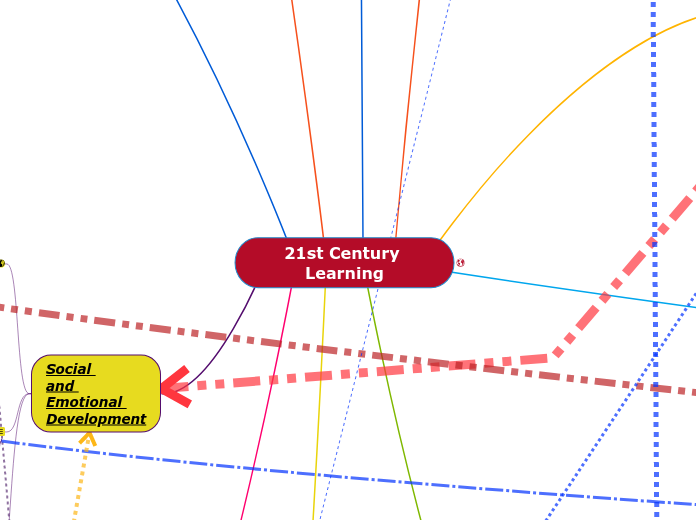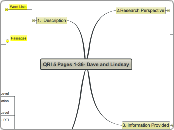"Making valid decisions using valid data"
Validity
Rules to give valid tests...
Multiples times and places
Multiple measures
Records, interviews, observations, tests
Use multiple examiners
Factors affecting validity are...
Differential item effectiveness
Norms
Opportunity to acquire skills/behaviors
Enabling sates and behaviors. (Sensory abilities, Language, prerequisite skills, motivation)
Method of measurement
A test cannot be more valid than it is reliable.
Is the test actually meaning the desired skill?
Test needs to be reliable
Construct
This is the theory behind the test. There is no certain outcome that one must obtain. An example of this test would be an IQ test.
Criterion
These are tests that are related to the state standards. The test items should be correlated to the state standards. For example, the Praxis.
Content
Measures what content/curriculum was taught. These would be test that are given within the class. For example after a math unit you are then given a math test.
Scores used in testing and other measures
the standard Curve
In a standard curve you can see that there are 8 sections. The first section is less than 1%. Second is 2%. Third is 14%. The fourth and Fifth is 34%. The sixth is 14%. The sevetnth is 14%, and the eighth is Less than 1%.
If a student's tests scores fall in either of the 34% parts on the standard curve then they are considered average.
Converting Scores
Z Score: (x-Mean)/SD New Score: (Z*SD)+Mean
Derived scores: (often called standard scores too) are converted raw scores that have been adjusted and are reported relative to the populations they were taken from.
Scores can be compared when converted. (Standard score, t score, scaled score, V scaled, and Z scores
Z Score: Mean: 0 SD: 1
V-scaled Score: Mean: 15 SD: 3
Scaled Score: Mean: 10 SD: 3
T Score: Mean: 50 SD: 10
Standard Score: Mean: 100 SD:15
Raw Scores: the number of correct answers on a test.
Others scores that we used come from the raw score. The Raw Score is a base for us to then find news ways to interpret the data.
Scores are just a quantitative representation of a qualitative performance that could be represented qualitatively instead of quantitatively.
Sources and types of Assessment Data
RIOT
Tests
Purpose of tests: Evaluate learning, Grading, Evaluating if objectives are met, and Evaluating instruction.
Formal
Formal tests are more standardized.
Norm Referenced test, WISC-IV, K-TEA
Informal
interviews, teacher made tests, curriculum based assessments, and portfolios
Validity and Reliability
Observations
Systematic and Nonsystematic
Interviews
Help to confirm findings from other sources.
Interview parents, teachers, the child, ect
Records
Anecdotal records
Developing norm-referenced tests
Formal assessments
Norm Referenced Tests
How to cerate them: Define the purpose, develop a pool of test items, pilot test the items, revise the items and testing procedures as needed, administer the test to a norm group.
Standardization: The process of making something the same by predetermined rules and exportations.
The Metrics of Assessment
Standard Error of Measurement
SEM = SD 1Square root of (1- r)
SEM is taking into account the error that will enviably happen when it comes to assessments. There will always be some error for some reason, could be random or could be be a measurement error. But you have to take into account this error.
Frequency Distributions
Causation: when two or more things correlate and cause each other to happen.
Correlation: when two or more things have some connection with each other. They do not have to cause each other, but they can.
Measures of Dispersion
Standard Deviation
You can be a certain amount of SD from the mean.
The SD is simply the square root of the variances. In the variance you had to square the numbers to prevent negative numbers, but that is not what the SD is. So you have to put all those numbers back to what they were without them being squared. So you take the square root of them.
Variance
"It takes each score difference from the mean (x-mean). But the total of all of the differences added together would be zero, because some would be negative and some positive and they would cancel each other out. Therefore we square them, which makes them all positive and then add them together. In the equation below, we take the first value (x1) and subtract the mean and square the difference. Then the same with the second value, continuing to the nth value. Then we divide by n."
Range
Range is the difference between the extreme scores (highest–lowest).
Central Tendency
Mode
The most common test score. This helps you know where the majority of your class it at became you can see the scores that are most common in your data set.
Median
The middle data point.
Mean
The mean, or average, helps you see overall all howl the class is preforming. It is not the best measure of how all of your students are doing became you could have an average score and not a single one of your students received that score.
x̄ = (SUMx)/n
Assessment Decisions in Context
IDEA
6 Principles of IDEA
Parental Participation
Procedural Safeguards
Least Restrictive Environment (LRE)
Zero reject
Non-Discriminatory Evaluation
Free Appropriate Public Education (FAPE)
Garbage in Garbage out.
How do you data in valid ways?
Scope of assessment, valid instruments, gather data, make a decision.
The data you collect needs to be valid so that you have valid information to make a valid decision.
Validity relates to reliability
Reliability means a test is consistent in the way it is grade and the material
Valid data is accurate, reliable, robust, and complete









